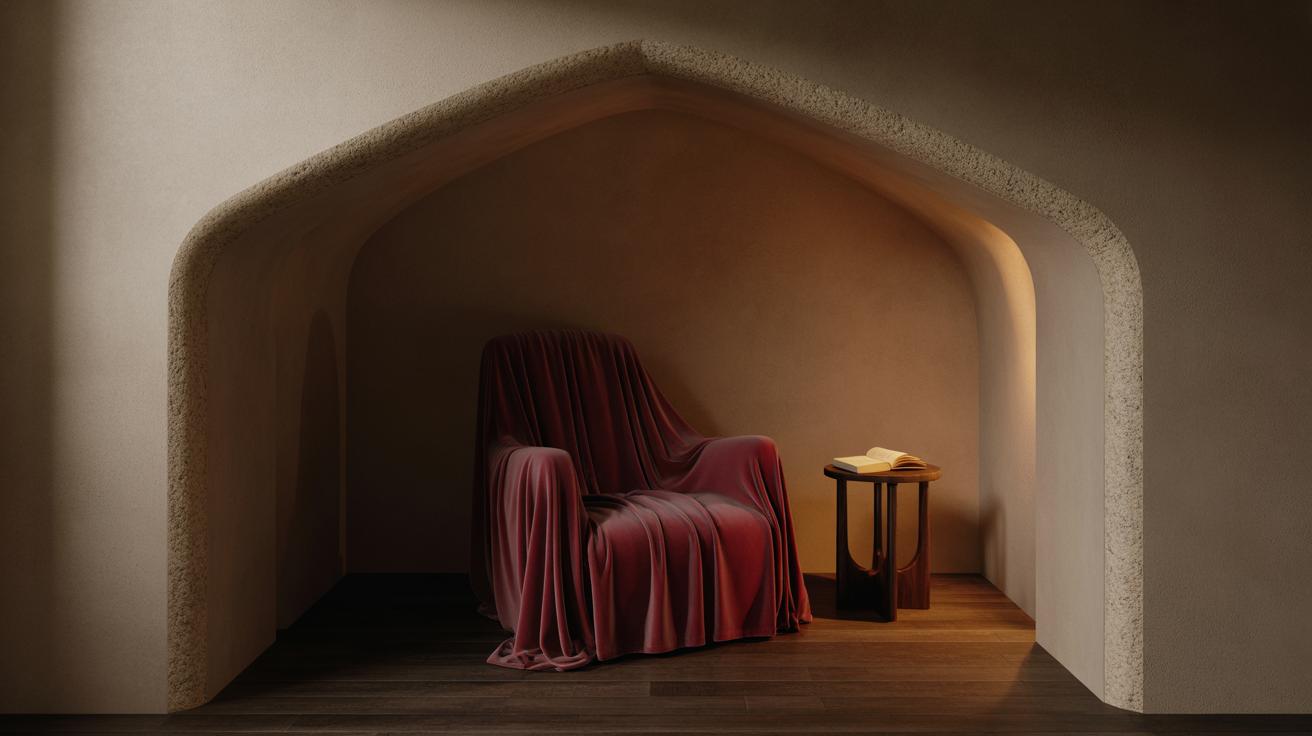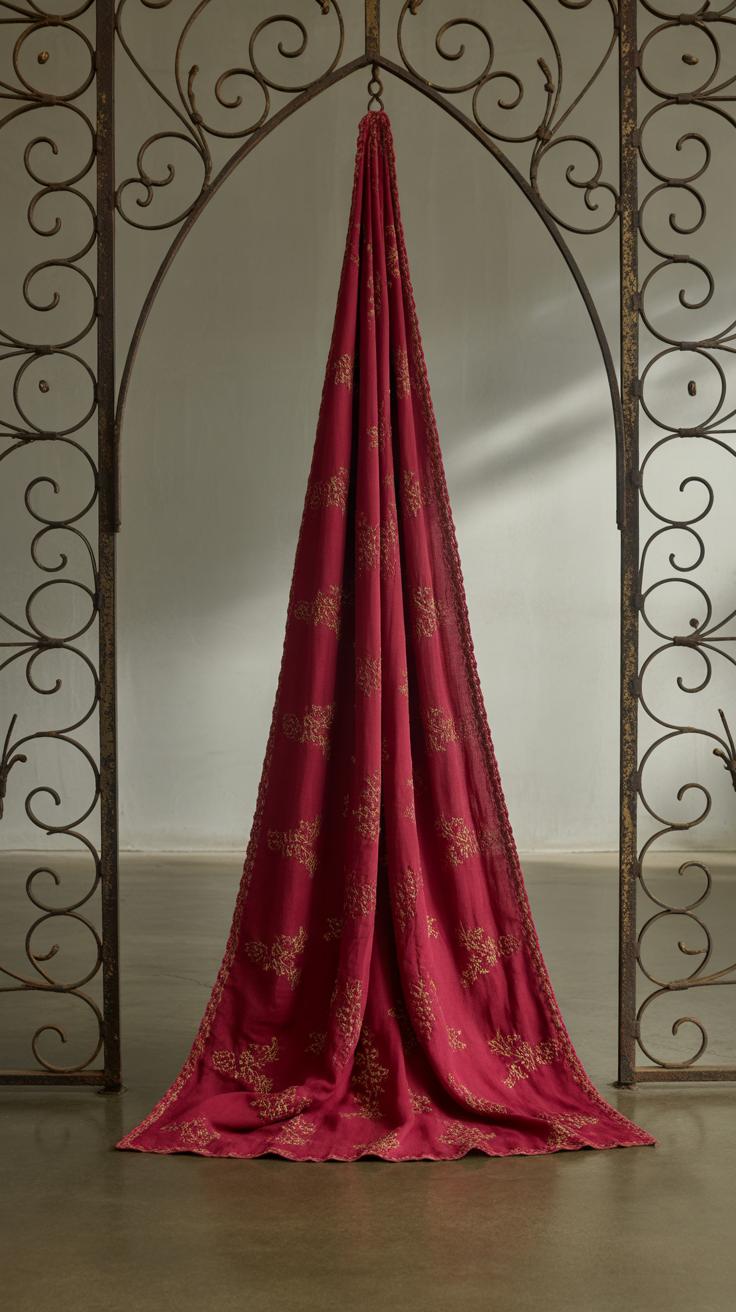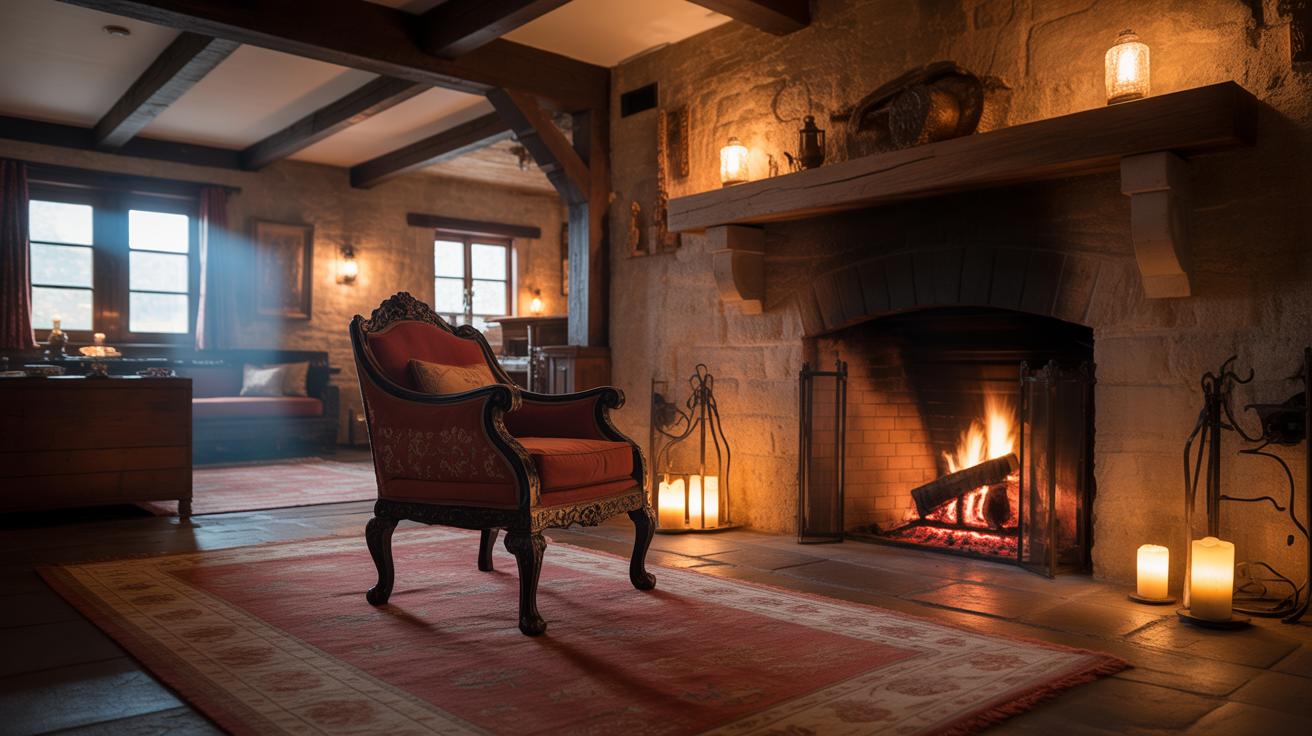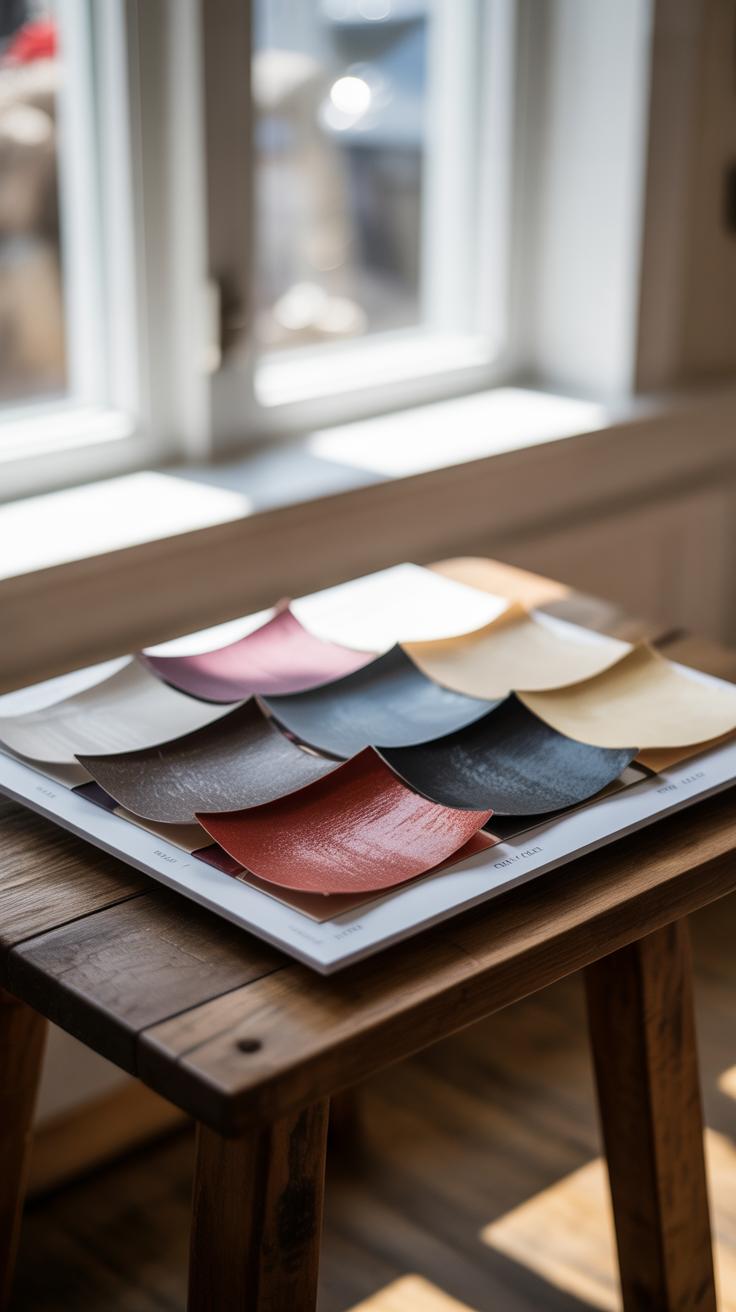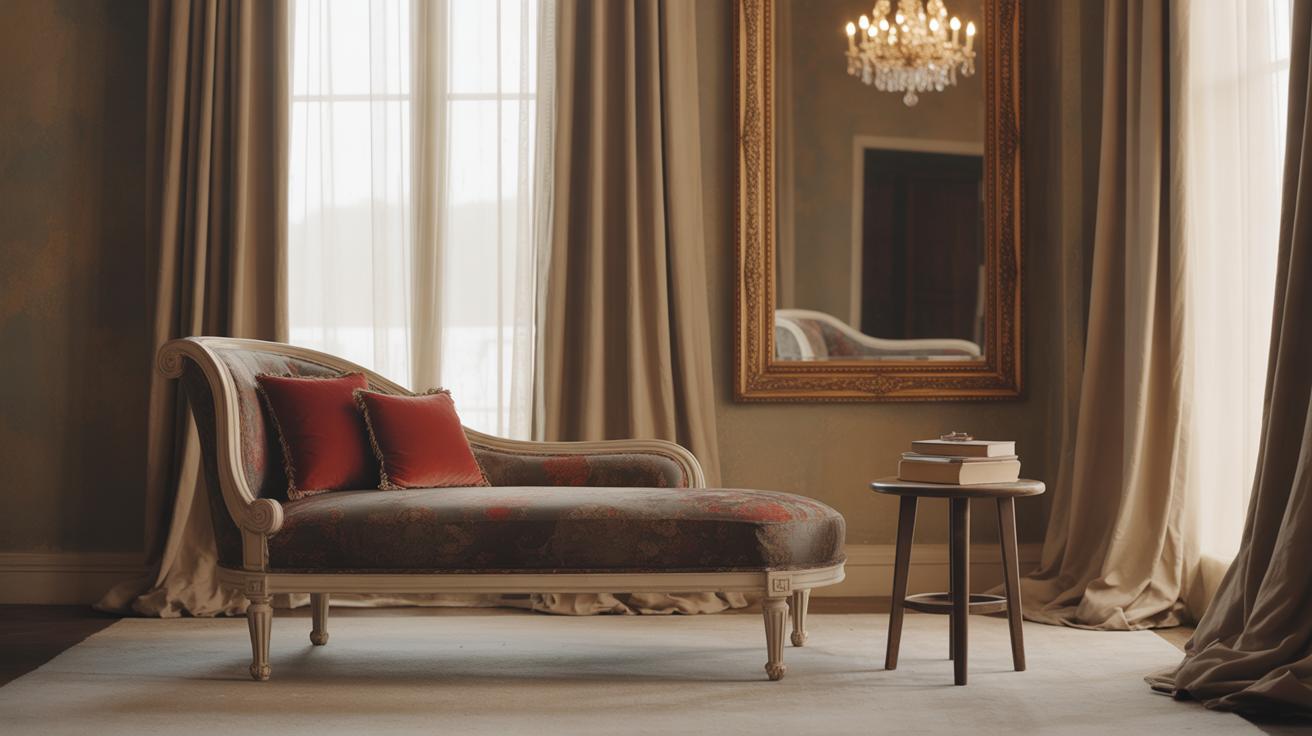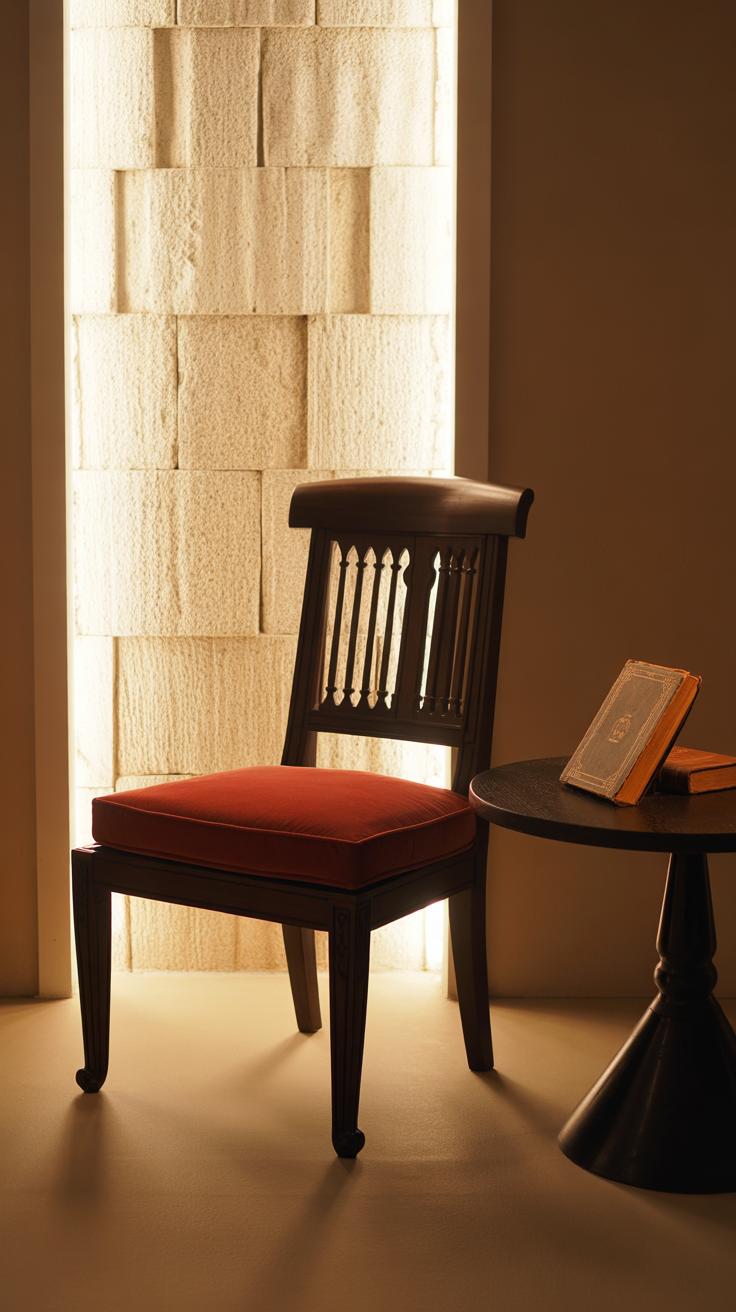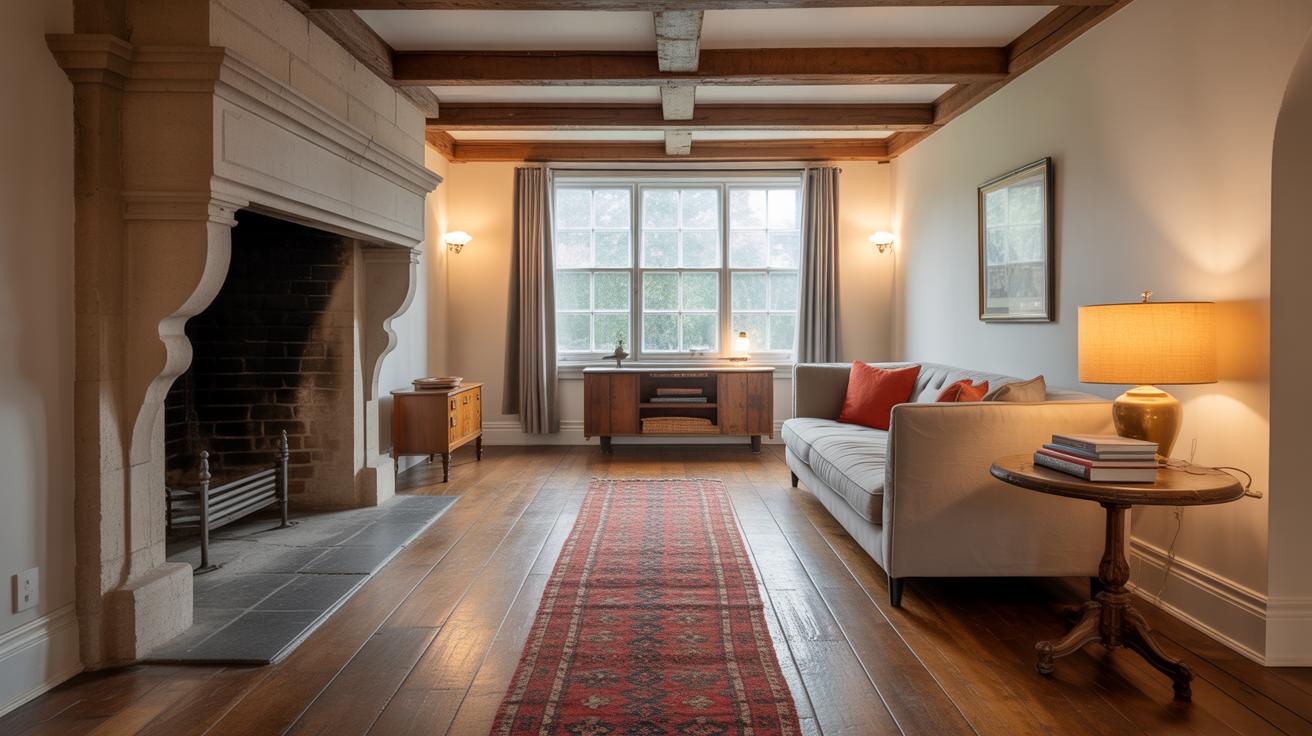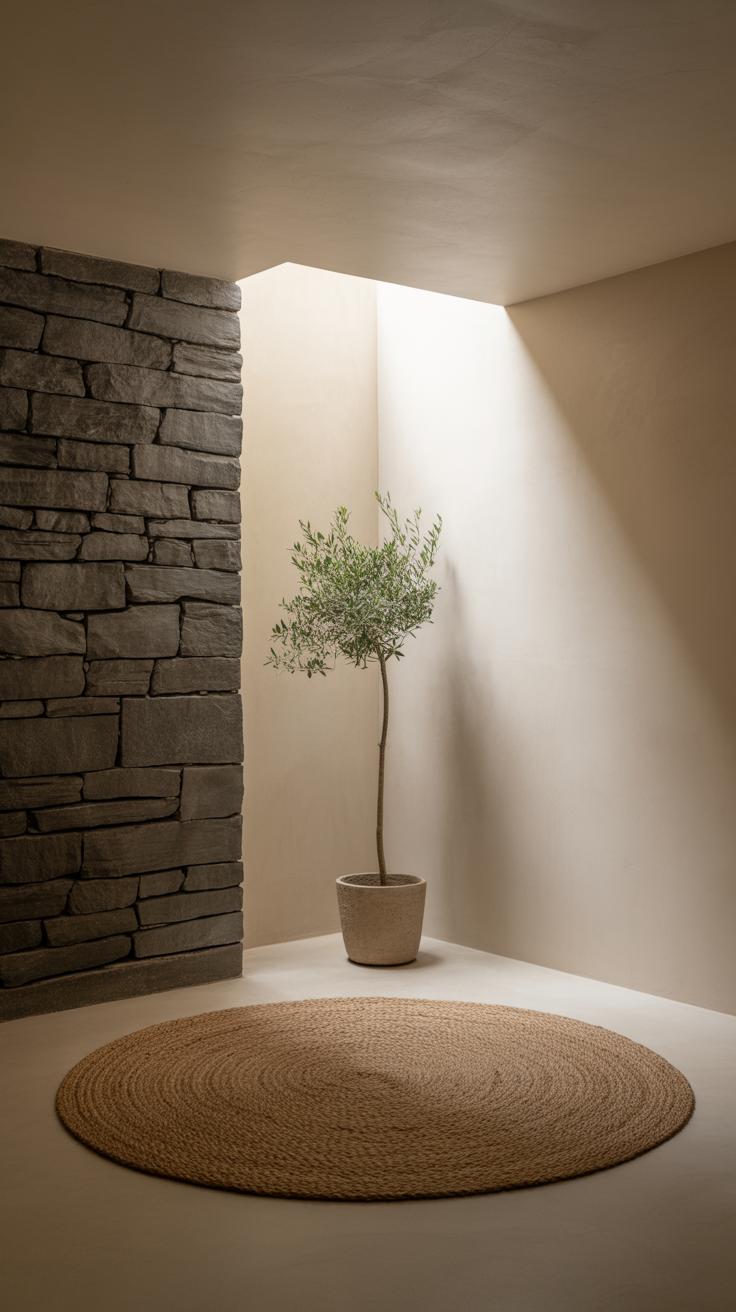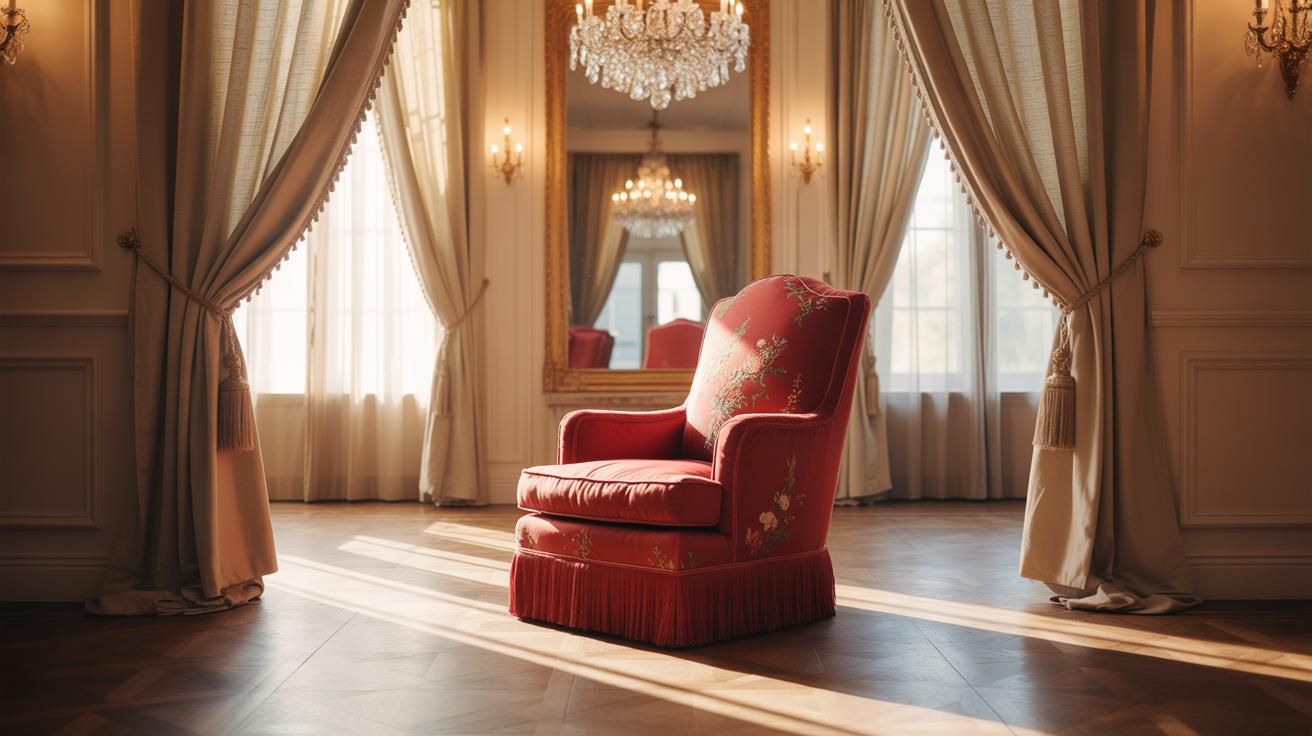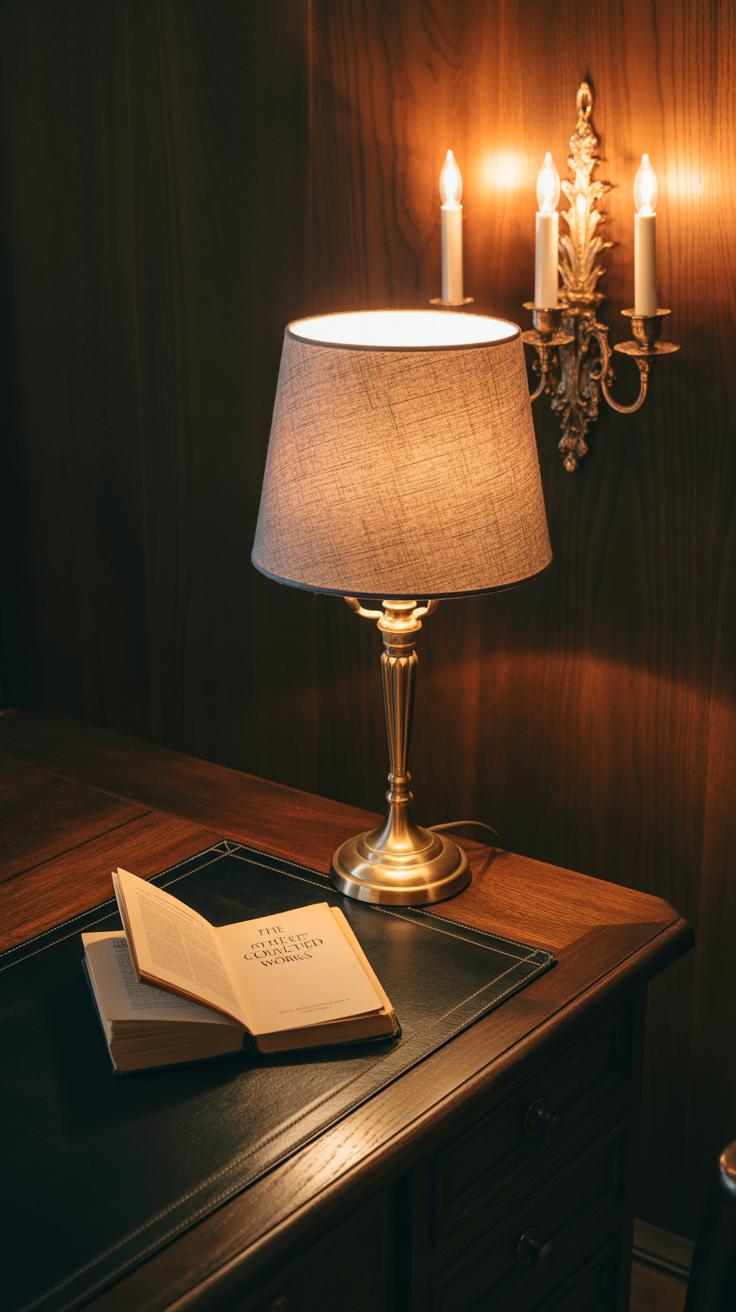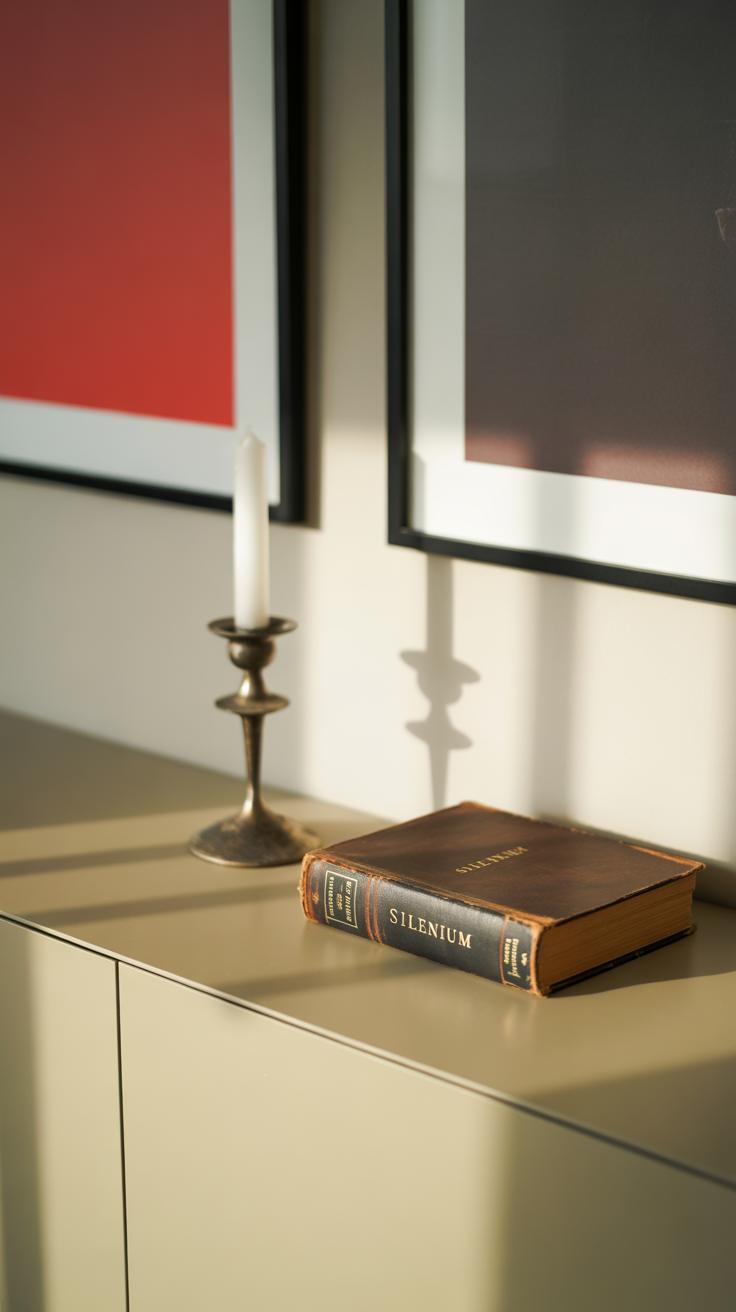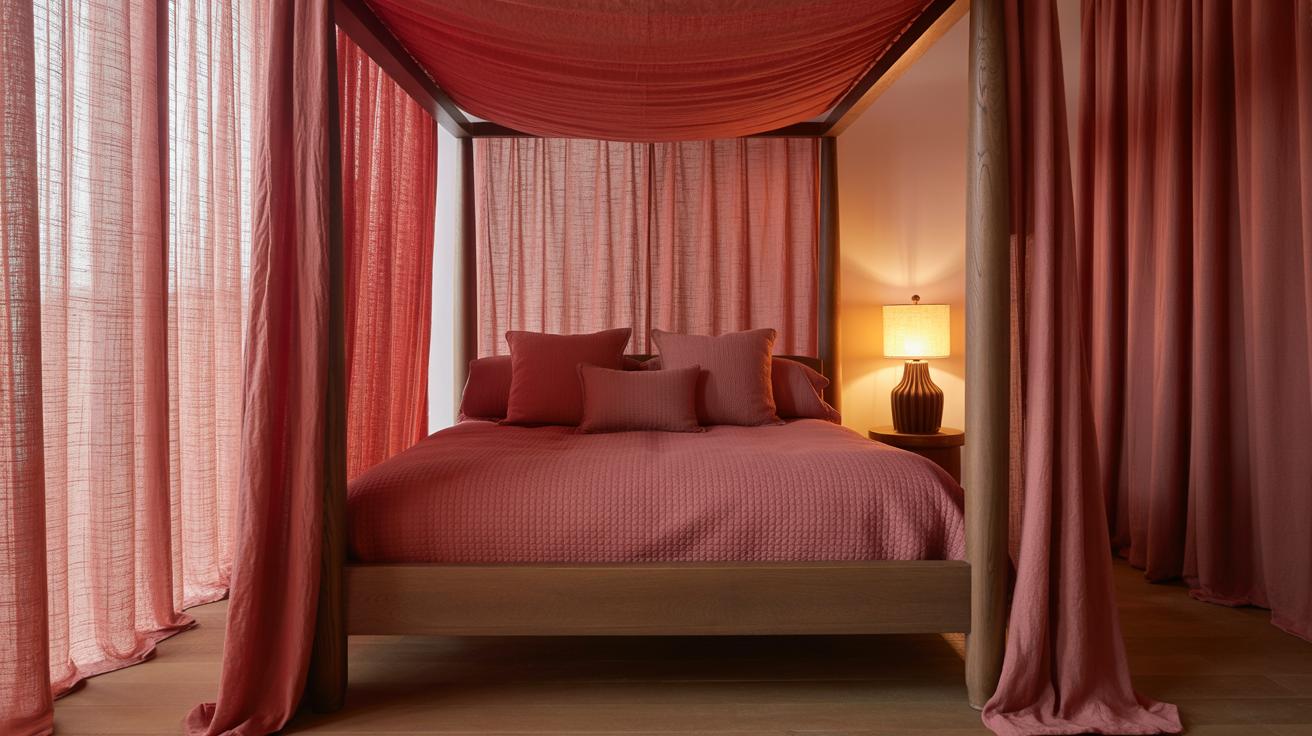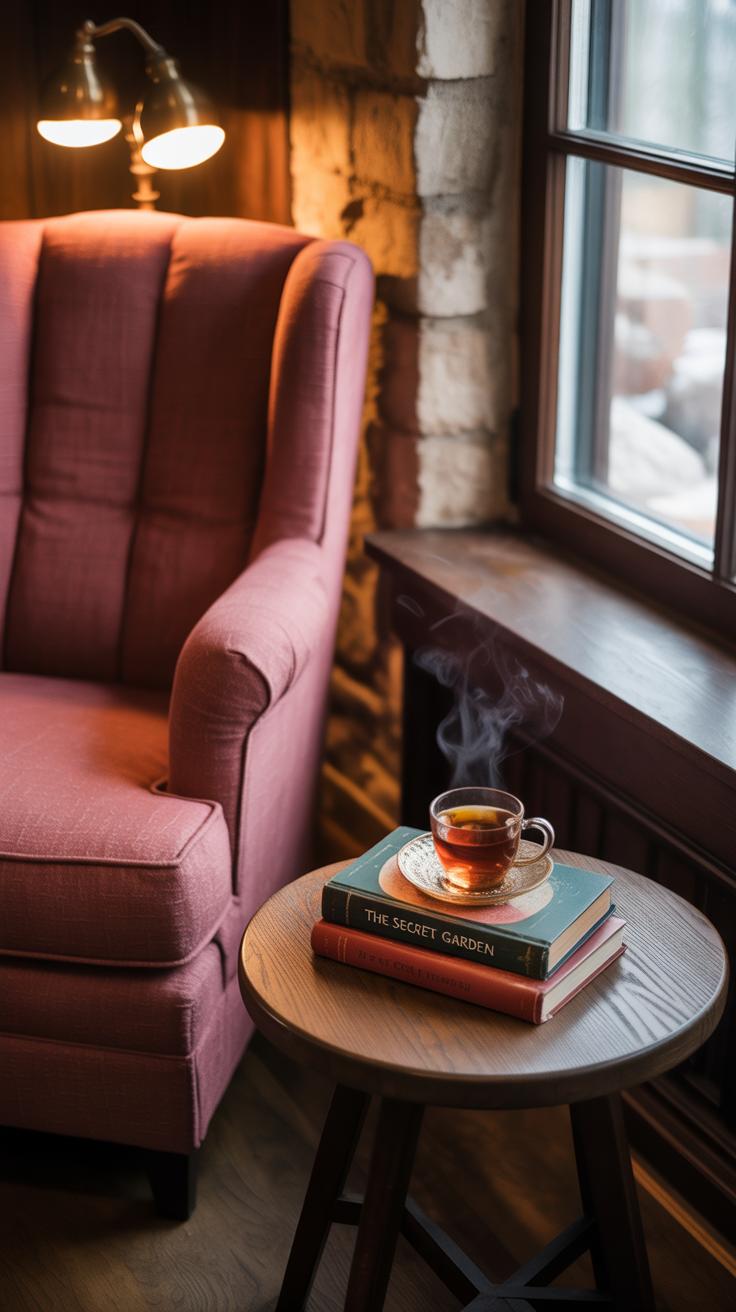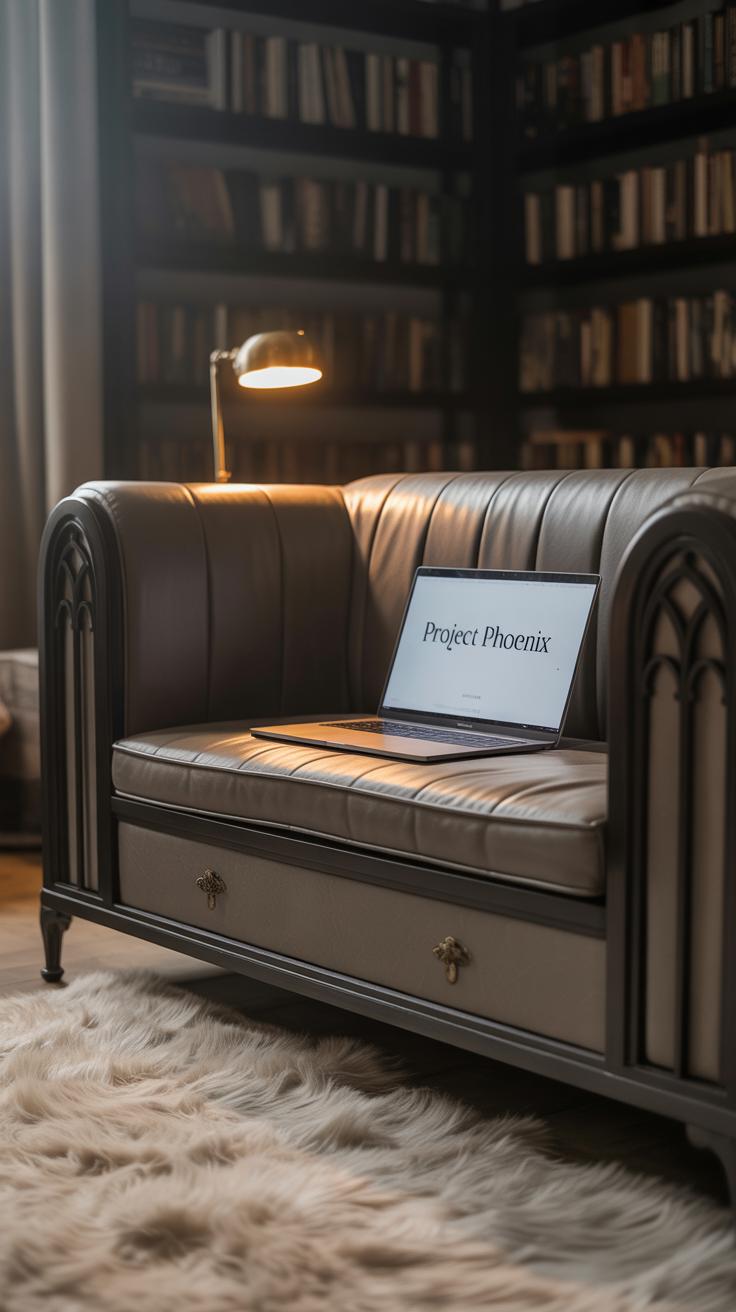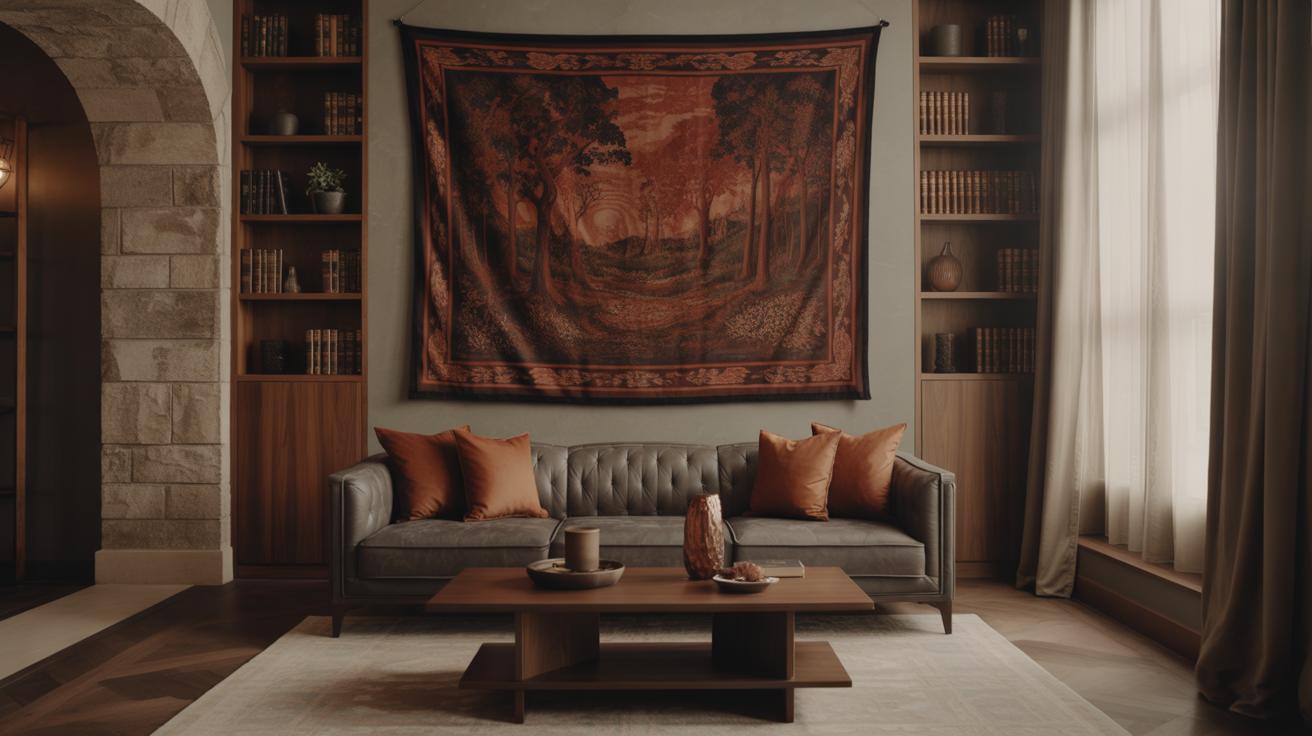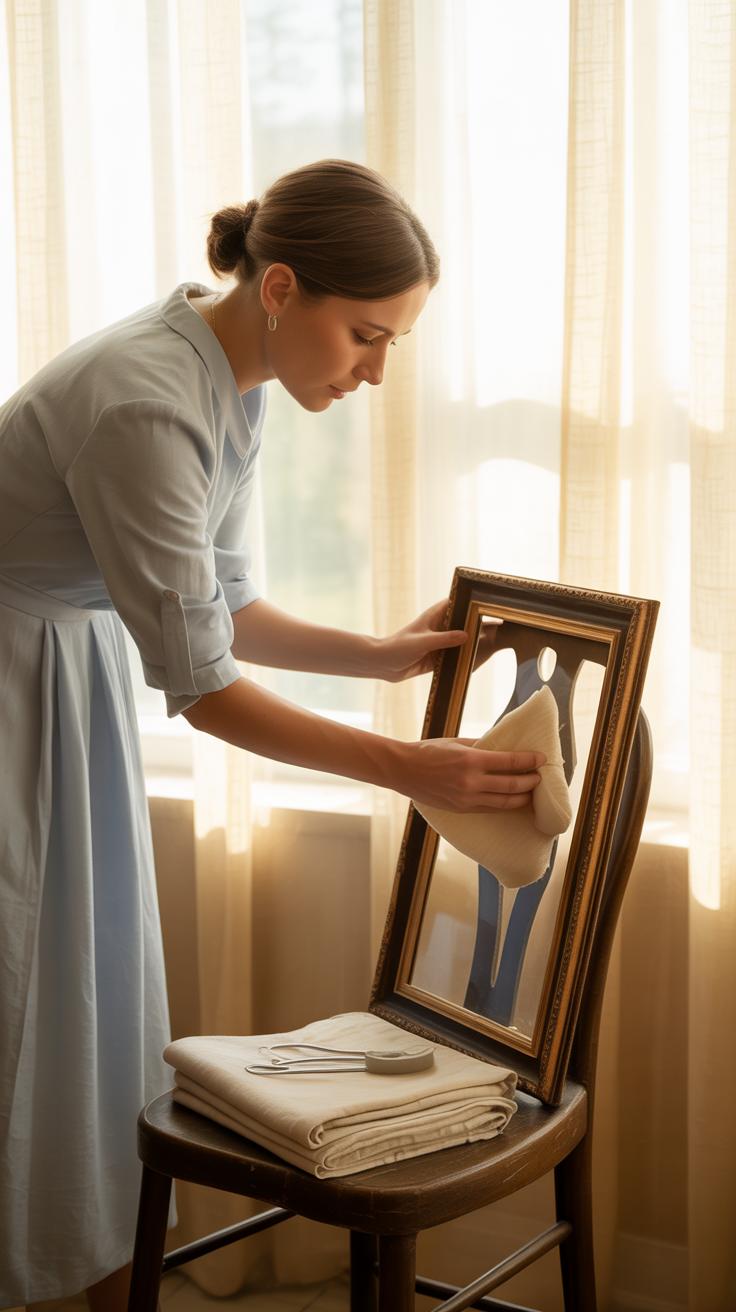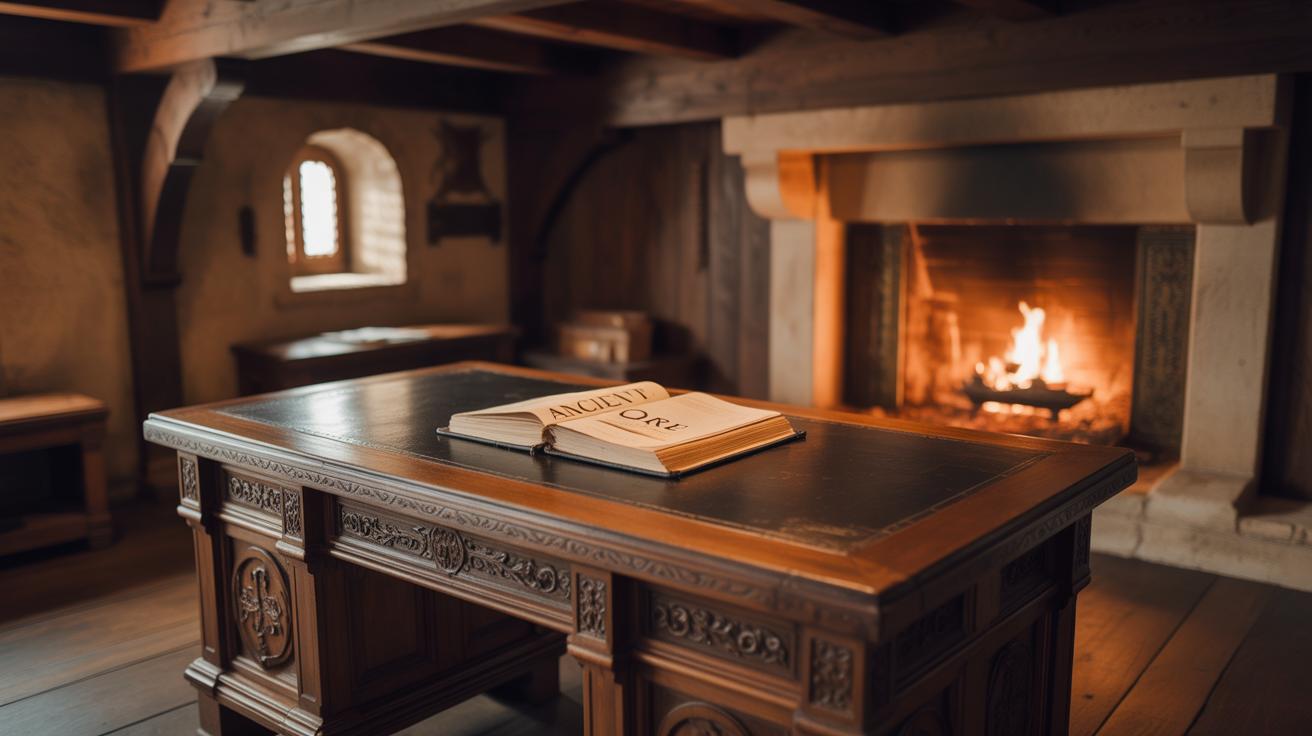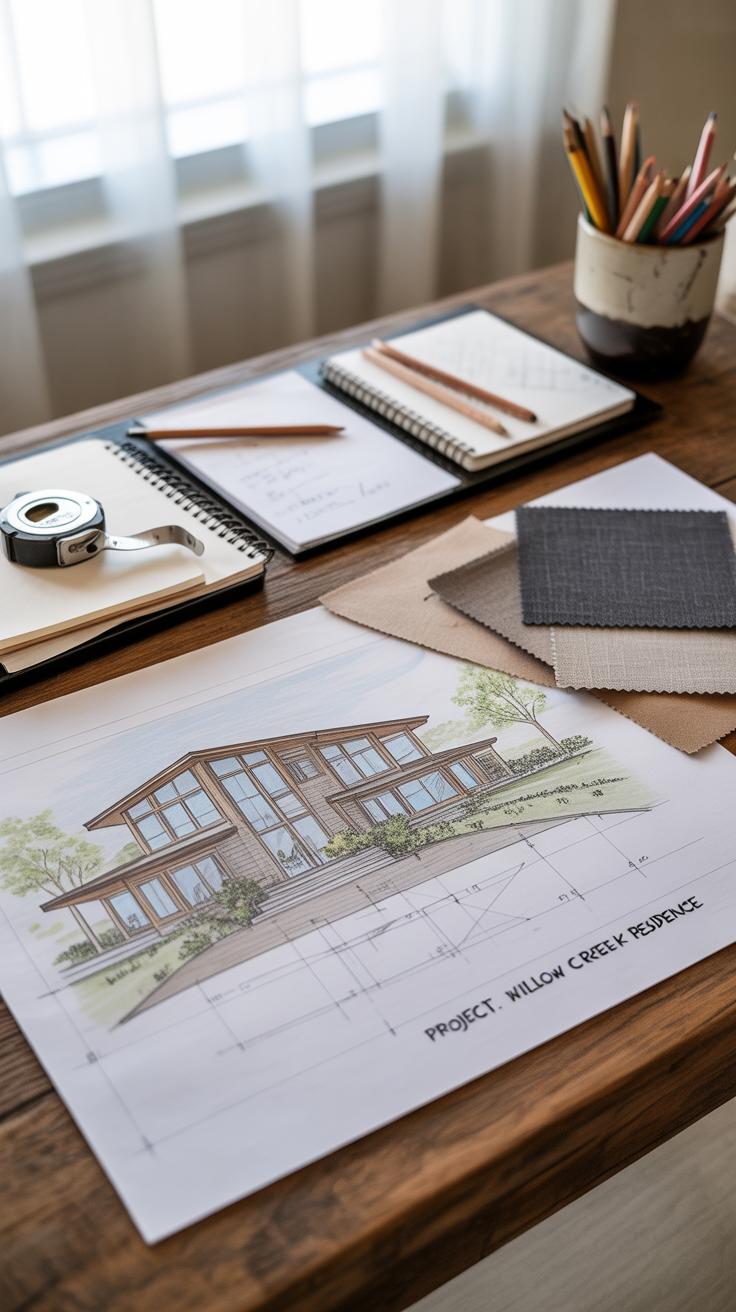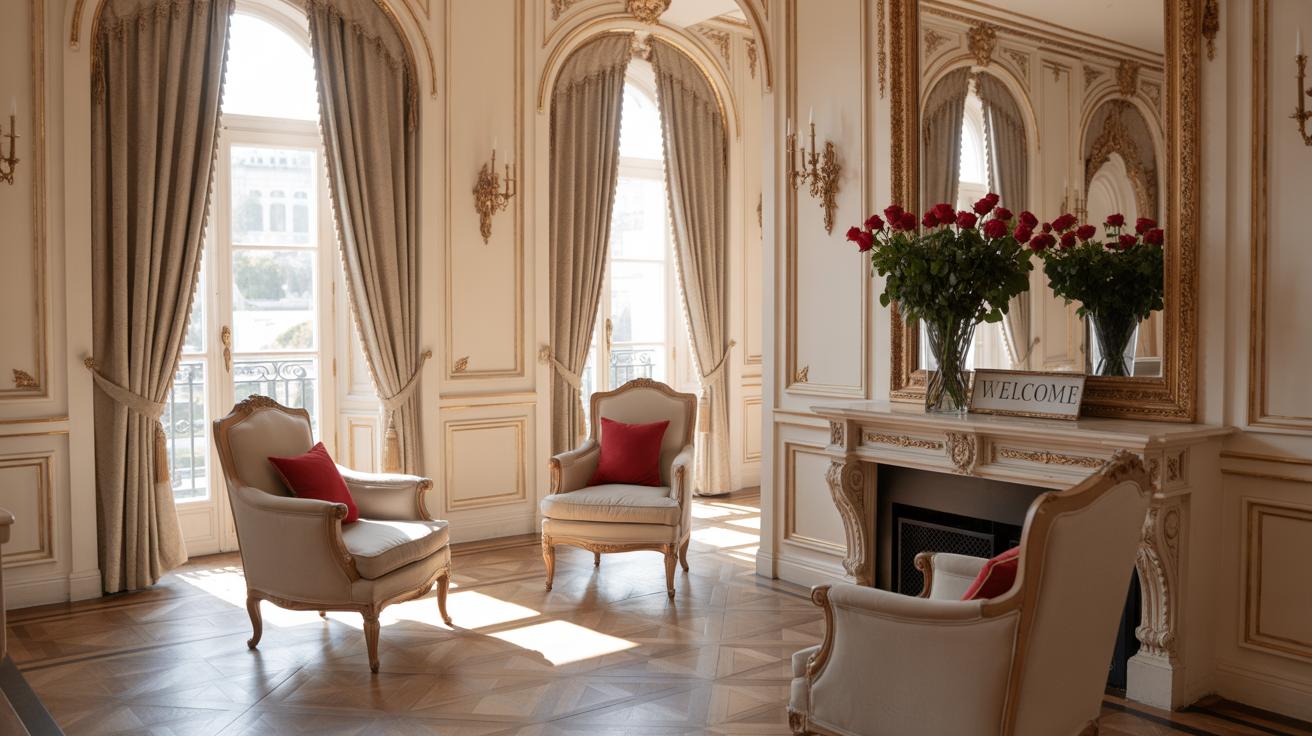Introduction
Gothic castle decor offers a unique way to create dramatic yet cozy rooms. This style draws inspiration from the medieval castles and Gothic novels. It features elements like pointed arches, dark wood, stone textures, and rich fabrics that can transform your home into a place full of character and charm.
In this article, you will discover ideas and tips to achieve this look in your personal space. From choosing the right colors and furniture to adding accessories that evoke the Gothic spirit, each chapter guides you on making your room a comfortable sanctuary with a touch of history and drama.
Understanding Gothic Castle Style
The Gothic castle style is deeply tied to medieval Europe, where architecture was as much about defense as it was about grandeur. These castles emerged during the Middle Ages, blending practical fortress features with an evolving aesthetic that hinted at something more intricate and, dare I say, atmospheric. When you think Gothic castles, certain elements jump out—pointed arches, towering spires, and ribbed vaults. These weren’t just decorative; they served structural purposes, distributing weight and allowing for taller, more open interiors.
The style carries a strong medieval influence, rooted in the era’s social and religious ideals. The spaces often feel monumental but can also be strangely intimate. Walls were thick, sometimes heavy with carved details or grotesque faces. Still, the feel wasn’t purely cold stone; there was warmth, primarily through the carefully chosen materials.
Speaking of materials, most Gothic castles depended heavily on local stone, which ranged from rough-hewn blocks to finely dressed surfaces. Dark woods—think oak or walnut—were common for doors, beams, and furnishings. You’ll also spot rich, deep colors in tapestries or wall hangings, such as burgundy, navy, and forest green. This blend of hard stone and warm textures creates the dramatic yet cozy atmosphere that many seek when trying to capture Gothic elegance in home décor.
Choosing Colors for Gothic Decor
Deep Colors That Set the Mood
When picking colors for a Gothic castle-inspired room, dark shades naturally come to mind—and for good reasons. Colors such as deep burgundy, forest green, and rich navy blue bring that unmistakable drama. These hues carry weight, almost like they absorb light instead of reflecting it, which creates a strong atmosphere. But you don’t want the room to feel like a cave, so it’s about how you layer them. For instance, a navy blue wall can feel regal but cold unless softened a bit. Burgundy is a favorite because it hints at warmth and richness simultaneously, while forest green adds a touch of nature’s mystery, grounding the space in an almost medieval feel.
Think about where you want the mood to settle. Would you like one bold wall or a fully enveloped room in darkness? Maybe a mix of these colors on fabrics like velvet cushions or heavy drapes makes more sense—allowing the walls to remain understated while textiles pull drama closer. I’ve found that dark floors or ceilings can also contribute subtly but powerfully to that Gothic vibe, without overwhelming senses.
Adding Warmth with Neutral and Accent Colors
Now, pairing those heavy, moody tones with some warmth will prevent the room from feeling too cold or uninviting. Creams, golds, and warm browns serve as excellent counterbalances. Cream walls or textiles can gently break up the dark, while gold accents—think frames, lamps, or even small decorative details—add a flicker of light and luxury. These touches reflect candlelight or soft lamps in a way that feels cozy rather than flashy.
Warm browns, like those found in aged wood or leather, build on this balance. They ground the room and introduce a tactile warmth that you can almost feel. It’s a bit of a dance, really. If you lean too much into those neutrals, you risk losing the Gothic essence. But without them, the room might feel overly cold or oppressive. It’s okay to shuffle between more or less warmth depending on the season or mood—you might find yourself layering in richer golds come winter, then dialing back for spring.
In my experience, unexpected pairings work well: navy with a hint of rust or burgundy softened by a warm beige. The key question to ask yourself with every new shade—does this pull me into the room or push me away? Cozy is the goal, even in a space full of shadows.
Selecting Gothic Furniture
Wooden Pieces With Carvings
When it comes to furniture, dark woods like mahogany, walnut, or oak are your best bets for nailing that Gothic vibe. Look for pieces with intricate carved details—think twisted columns, floral motifs, or pointed arches etched into legs and backs. These subtle flourishes can instantly bring a touch of medieval craftsmanship to the room.
I’ve noticed that furniture carved by hand has a certain unevenness that adds character, unlike perfectly smooth mass-produced items. Those small imperfections actually deepen the authentic feel. But don’t just go for the heaviest or most ornate pieces you can find. Sometimes, a single carved chest or side table creates more impact than crowding the room with overly decorated furniture.
Balancing Ornate and Practical
Comfort is key—even in a Gothic-inspired room. You want a space that feels inviting, not like a museum. Trying to find furniture that looks medieval but supports modern living can be tricky, but not impossible. Think cushioned chairs with carved wooden frames or sturdy beds with detailed headboards paired with cozy, plush bedding.
Some suggestions to keep in mind:
- Prioritize ergonomic seating—ornate armrests are great, but make sure the chair doesn’t leave you stiff after a while.
- Consider upholstery in rich fabrics like velvet or brocade to soften the wood’s severity while sticking to Gothic aesthetics.
- Mix older vintage pieces with newer items that emulate Gothic designs, providing a balance between style and functionality.
- Look for furniture with storage—like carved chests or cabinets—so your space stays tidy and comfortable.
Ultimately, ask yourself: would I enjoy spending hours here? If the answer is no, you might need to reconsider some selections. Giving priority to comfort alongside style helps keep the room dramatic, yes, but also warm and lived-in.
Incorporating Stone and Texture
Stone walls or stone-like finishes can instantly ground a room in that old-world castle vibe. When I first experimented with faux-stone panels, I was surprised how much atmosphere they added without the coldness real stone sometimes brings. They create a sense of permanence, like your room has a story etched into every surface.
Think beyond just walls. Stone accents in fireplaces, archways, or even around window frames make the space feel thoughtfully layered. You don’t need every wall covered; a single textured wall often does the trick, giving you that dramatic yet lived-in look.
Texture doesn’t stop at stone. Fabrics play a huge role in breaking the hardness of stone and warming things up. Velvet, brocade, leather—these materials invite touch and soften the castle austerity. I find velvet curtains or heavy brocade cushions bring depth and comfort. Leather, especially in seating, adds a rugged, timeless edge, while still feeling welcoming.
- Stone or faux-stone walls create a solid, historic backdrop.
- Using stone as accent pieces around fireplaces or doorways adds character.
- Velvet or brocade fabrics bring softness and richness to the space.
- Leather furniture offers warmth and an authentic, sturdy feel.
Maybe you wonder, how much stone is too much? It can drift from cozy castle to cold dungeon quickly. Mixing rough stone with tactile textiles balances that fine line. Don’t hesitate to test these elements slowly; sometimes less is surprisingly more.
Lighting for a Gothic Room
Lighting plays a crucial role in shaping the mood of a Gothic room. It’s tricky—too bright, and you lose the mysterious allure; too dim, and it feels cold rather than cozy. Striking that balance can be a bit of an art.
Using Candles and Chandeliers
Candles are almost essential when aiming for that Gothic castle atmosphere. Their flickering flames cast moving shadows that bring walls and textures to life. Maybe you’ve noticed how a cluster of candles on a mantel or scattered around a room can instantly soften the space while keeping things dramatic. Wrought iron chandeliers add another layer—they carry a medieval feel but also hold multiple candles or bulbs, offering more steady light without losing atmosphere. If you pick chandeliers with twisted or ornate ironwork, you get that authentic Gothic vibe without feeling like a dim dungeon. Sometimes, combining both candles and an iron chandelier gives just the right mix between old-fashioned charm and enough brightness to feel inviting.
Warm Light Bulbs and Lamps
For practicality and comfort, warm light bulbs and lamps are your best friends. They soften the harsher edges of stone walls or dark wood. Using bulbs with a soft golden hue can mimic candlelight without sacrificing visibility—handy when you want to read or relax without straining your eyes. Table lamps with fabric or parchment shades also bring in warmth while breaking up the space. Think about placement too; a few well-placed lamps in corners or on side tables can prevent shadows from becoming oppressive. Really, the goal is to keep the room feeling alive rather than gloomy. Oddly enough, some people worry that warm bulbs might clash with Gothic themes, but they actually complement the textures and colors far better than cooler lights.
Choosing Artwork and Accessories
When selecting artwork for a Gothic castle-inspired room, think beyond just what “looks old.” Pieces like medieval paintings—portraits of nobles or scenes from ancient stories—add depth and history to your walls. And you might want to consider hanging woven tapestries that depict knights or heraldic symbols; they bring texture and a kind of visual warmth that few other wall hangings can provide. Oddly, I find that even a single gargoyle statue placed on a shelf or near a window can instantly sharpen the Gothic vibe, balancing drama with charm.
Don’t hesitate to weave in personal treasures that echo the era in spirit, not just style. Candle holders made of wrought iron or aged brass can serve both as lighting and decor, casting flickering shadows that feel intimate rather than cold. Antique books stacked or displayed on an old wooden table not only speak to history but also invite curiosity. Iron pieces like small chests, decorative keys, or ornate locks add subtle, thoughtful touches that make the room yours, not just “period perfect.”
Which objects resonate with you? Perhaps an old letter opener or a vintage quill could fit nicely. Sometimes the most unexpected items help complete the look in a way that’s both dramatic and personal. It’s really about layering history with your own story.
Creating Cozy Corners
When working with Gothic castle decor, it’s easy to get caught up in the grand scale—the towering arches, the heavy drapes, the ornate chandeliers. But what makes a room truly inviting is those smaller, snug spots where you can retreat and feel comfortable. Designing cozy corners within dramatic spaces adds warmth without losing the Gothic spirit.
Using Soft Seating and Throws
Your choice of seating matters more than you might think. A plush armchair in deep velvet or leather feels right at home among stone walls and dark wood. Surround it with cushions in rich jewel tones or intricate patterns for texture and softness. Throws—think thick wool or faux fur—offer comfort and a lived-in touch. They’re the silent invitation for someone to sit and stay awhile. I’ve found that having a favorite throw draped casually across the chair breaks up the formality. Perhaps it’s the contrast that works—the rough stone paired with soft fabric—that makes even the most dramatic room feel, well, human.
Small Tables and Reading Lights
Cozy corners need practicality to stay useful. Small tables, preferably in wrought iron or dark woods, nestle perfectly next to seating and hold essentials: a hot cup of tea, a well-worn book, a candle that softens shadows. Adjustable reading lamps bring light exactly where you want it, creating pockets of warmth without overpowering the room’s mood. You might hesitate to add modern fixtures, but when chosen carefully—dark metals or antique designs—they blend in rather than clash. After all, what’s a cozy spot if it’s uncomfortable to use? It’s those little details, tables and lamps included, that keep dramatic rooms from feeling like empty castles.
Incorporating Modern Comforts
Bringing modern comforts into a Gothic castle-inspired room can feel tricky—you want warmth and utility without losing that dramatic edge. It’s about subtlety. For example, think of built-in heating systems that hide behind stonework or ornate grilles rather than chunky radiators spoiling the vibe. I once swapped out a clunky heater for something quieter and sleeker, tucked beneath a carved wooden bench. It made a huge difference in comfort without shouting “modern.”
Technology That Blends In
Technology often feels like the enemy of Gothic decor, but it doesn’t have to. TVs can be hidden behind large, medieval-style paintings on hinges—when you want a screen, the art slides away. Speakers? Try antique-look enclosures or place them in carved niches. For charging stations, use furniture pieces with hidden compartments or drawers, camouflaged with heavy fabrics or dark woods. It might take a bit of trial and error, but the key is making electronics discreet rather than decorative.
Comfort Features to Consider
Comfort isn’t just about warmth or functionality. Adding plush, textured rugs underfoot softens stone or wood floors, giving your feet something to sink into after a long day. Don’t shy away from ergonomic furniture—there’s Gothic-style seating that supports you well without sacrificing the aesthetic. Think velvet cushions on high-backed chairs or subtly padded benches. Sometimes, combining old-world style with modern comfort means accepting a little inconsistency. But isn’t that part of what makes the room feel lived-in?
Maintaining Gothic Decor Over Time
Cleaning and Protecting Materials
Keeping the deep woods, cold stones, and rich fabrics in Gothic rooms fresh isn’t always straightforward. Wood, for instance, likes gentle care—soft cloths and mild, natural cleaners work best. Avoid harsh chemicals that strip its finish or damage carved details. Stone surfaces often gather dust in crevices; a soft brush or vacuum with a brush attachment can help without scratching. When it comes to fabrics—velvet, brocade, or heavy tapestries—I’ve found spot cleaning with a damp cloth and a mild detergent safer than full washes, which risk shrinking or fading.
Protecting these elements means more than just cleaning. Wood benefits from occasional polishing with beeswax or a product made for antiques, which brings out warmth without glossiness. Stone can be sealed to prevent stains but be wary of seals that look too shiny or plastic. Fabrics fare better if rotated frequently to avoid uneven sunlight exposure. Seems like a lot, but these little steps keep that Gothic gloom feeling cozy, rather than tired.
Refreshing the Look Periodically
You may wonder how to update a Gothic room without wrecking its essence. Swapping out smaller accessories—candleholders, framed prints, or pillows—can breathe new life into the space without drastic changes. Seasonally changing heavy drapes for lighter ones in complementary hues might surprise you with how much it shifts the atmosphere, still intense but fresh.
Try layering in new textures slowly, maybe a velvet throw with a pattern you’ve never used or a wrought iron sculpture for a subtle twist. It’s tempting to go all in at once, but a staggered refresh protects the theme you love, while keeping your space inviting. You want the room to feel alive, not trapped in a museum display. Do you find it hard to resist swapping out gothic accents just to keep things feeling current? I get it—sometimes, slight change feels like survival.
Planning Your Gothic Castle Room
Setting Your Budget and Goals
Before diving in, think about what you want from this Gothic space and how much you’re willing to spend. Maybe you like ornate chandeliers but can’t afford custom ironwork right now. Focusing on a few key elements will save frustration and money later.
Decide which parts of Gothic style speak to you most: is it the dark wood, stained glass, or perhaps rich textiles? That will shape where to invest your budget. You might start small, with accent pieces or lighting, then build up over time. Sometimes it’s better to add slowly rather than rush into a full room makeover.
Blending Gothic With Your Style
Gothic rooms don’t have to feel cold or overly dramatic. Mix Gothic details with your own tastes—maybe you enjoy a bit of modern simplicity or rustic warmth. A heavy velvet curtain can soften an iron candelabra’s harshness, for example.
Try combining materials to find balance: dark, carved wood next to soft linens or glass. It creates interest without overwhelming the senses. I found myself rethinking how much black was too much in the beginning; sometimes less is actually more, even in a Gothic setting.
Ask yourself: does this piece make the room feel like mine? If not, adjust. There’s room to bend tradition and still keep that castle vibe, just in a way that feels livable.
Conclusions
You have seen how Gothic castle decor combines drama with comfort. It is about mixing strong architectural styles with soft, inviting details. Using colors, materials, and lighting that reflect the Gothic spirit can make your rooms both striking and welcoming. This combination lets your personality shine through while giving your home a story to tell.
Remember that creating a Gothic-inspired room is about balance. Include elements that reflect history and mystery without sacrificing warmth. By applying these ideas, you can craft rooms that feel like your own castle—dramatic, cozy, and full of life.

